The research team of the so-called “Operation Night Watch” has succeeded in creating a highly detailed photograph of the world-famous painting The Night Watch by the Baroque painter Rembrandt van Rijn (1606-1669). This 717-gigapixel image has been on display on the website of the Amsterdam Rijksmuseum since January 3, 2022. It is the largest and most detailed photograph of a work of art, and also four times sharper than its predecessor, which the Rijksmuseum published about 18 months ago. Now it is possible to zoom in even closer on the tiny, razor-sharp pigment particles of the Night Watch. The photo was taken as part of the research of Operation Night Watch, as it is known internationally.
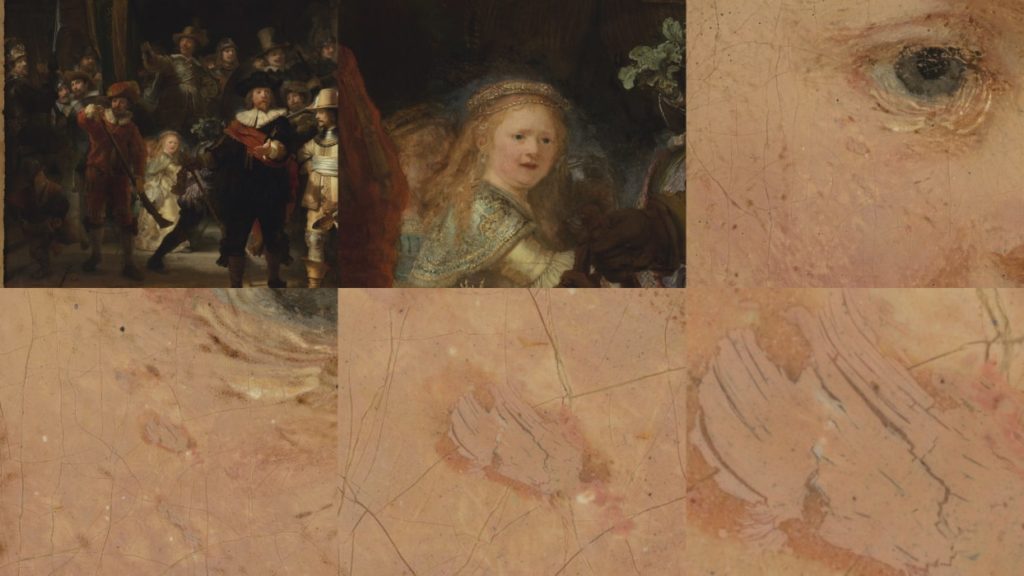
The photo of the painting has a resolution of 717 gigapixels (717,000,000 px). It is the largest digital image of a work of art to date. Each pixel corresponds to an area of 5 micrometers or 0.005 mm squared.
This exceptional achievement will make work on the Night Watch significantly easier. January 2022 will see the start of the conservation phase of Operation Night Watch. The front of the painting will not be visible for a short time, but thanks to this painting the public will still have the opportunity to admire Rembrandt’s masterpiece in the minutest detail.
Taco Dibbits, Director of the Rijksmuseum
Four times as sharp
The new photo is four times sharper than the photo of the Night Watch that the Rijksmuseum published on its website in May 2020. That image was 44.8 gigapixels in size, with each pixel representing an area of 20 micrometers, or 0.02 mm squared. The new image will allow scientists involved in Operation Night Watch to study the painting in even greater detail. It will also make it possible to track future aging processes with even greater accuracy. The image is so sharp that neural networks can be used to quickly detect similar pigment particles or identify the lead soaps, for example, which was not possible with the previous image.
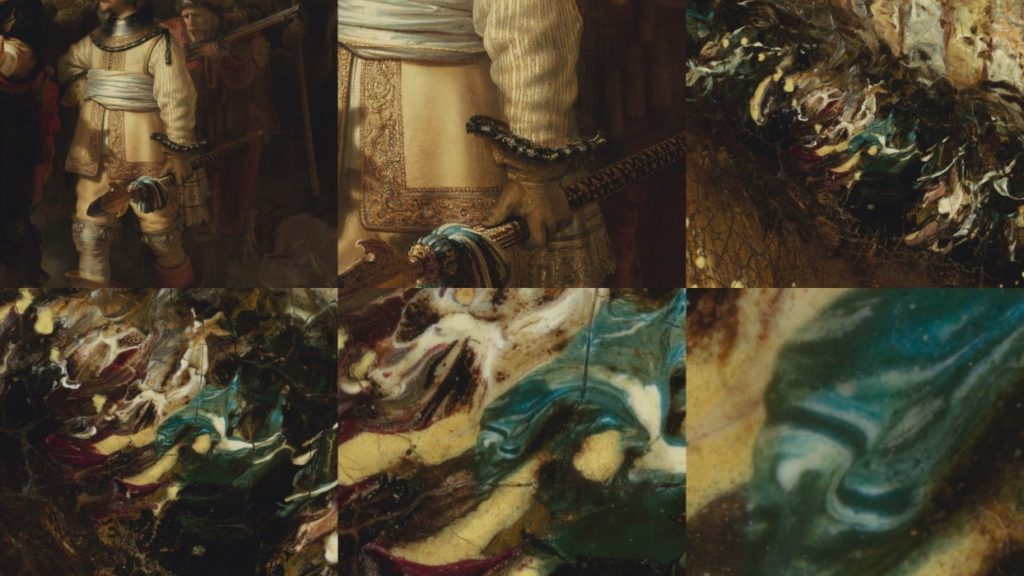
The procedure
The entire image is composed of 8,439 individual photos measuring 5.5 cm x 4.1 cm. The team used a Hasselblad H6D 400 MS camera with 100 megapixels to take the images. Artificial intelligence was used to combine these smaller photos into one large image with a total file size of 5.6 terabytes. The depth of field for each individual photo was only 125 microns, or 0.125 mm. To ensure that each image was sharp, the surface of the painting first had to be scanned with lasers and the camera calibrated very precisely. After each shot, the image was checked for color and sharpness using a neural network.
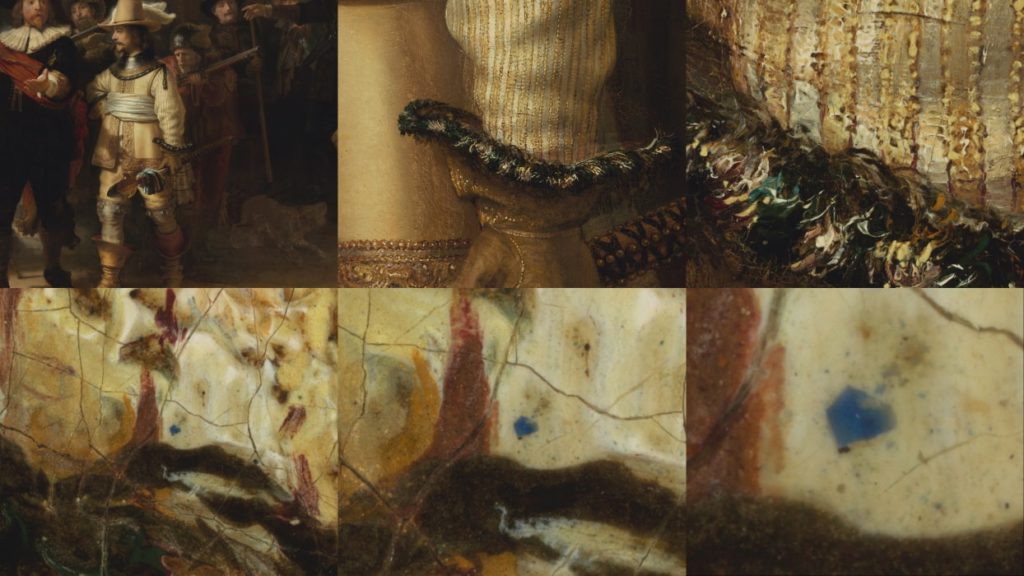
Start of conservation work
The second phase of Operation Night Watch will begin on January 19, 2022, when the first conservation work will be carried out on the painting itself. The first task is to mount the Night Watch on a new stretcher. This is necessary due to the “deformations” of the canvas, especially the clearly visible waves in the upper left corner. Although this problem requires immediate action, it can be easily fixed and will not affect the future of the painting. Then, step by step, it will be considered whether further conservation measures should be carried out.
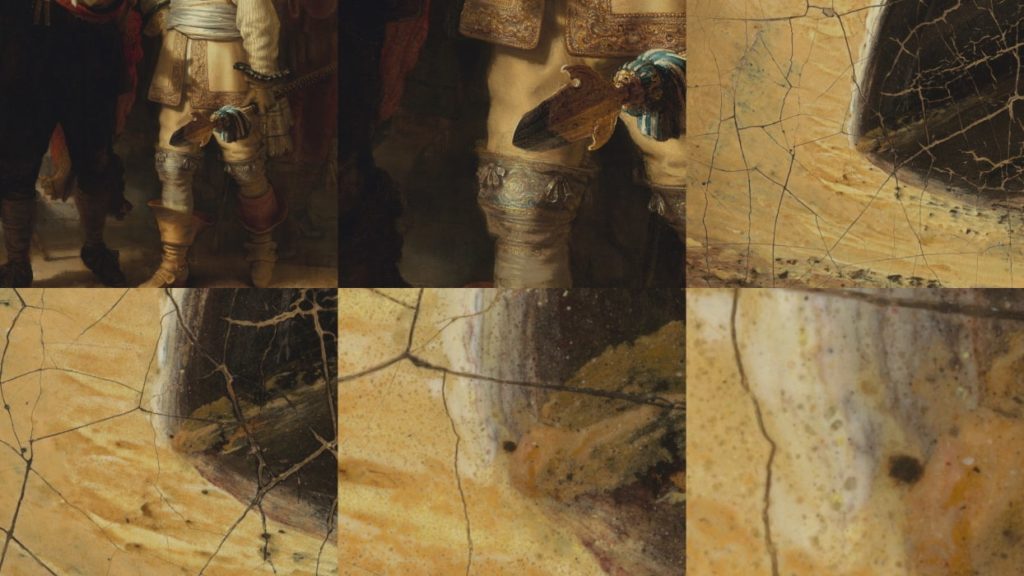
Operation Night Watch” is the largest and most extensive research and restoration project in the history of Rembrandt’s masterpiece. The goal is to preserve the painting in the best possible way for the future. Work began in the summer of 2019 and is taking place in a specially designed transparent glass chamber that allows the public to watch the process. Operation Night Watch uses the latest, most advanced research technologies and techniques and involves collaboration with experts from AkzoNobel – the Rijksmuseum’s main partner for Operation Night Watch – as well as museums, universities, university hospitals and research institutions in the Netherlands and abroad.
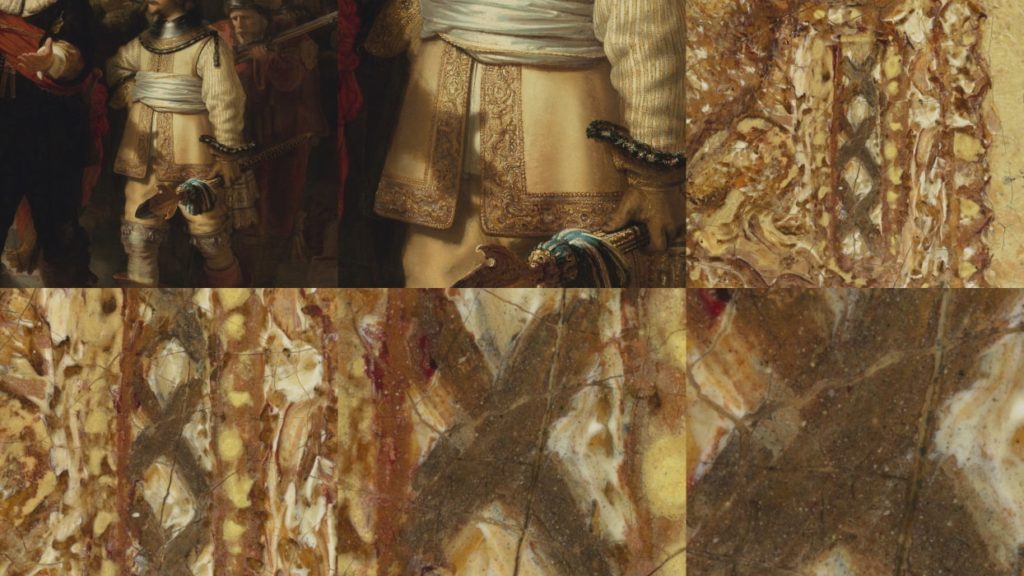
AkzoNobel is the main partner of Operation Night Watch. In addition, it is also made possible by the Bennink Foundation, C.L. de Carvalho-Heineken, PACCAR Foundation, Piet van der Slikke & Sandra Swelheim, American Express Foundation, De Rooij Family, Het AutoBinck Fonds, TBRM Engineering Solutions, Dina & Kjell Johnsen, D. Ermia Family, M. van Poecke, Bruker Nano Analytics, Henry M. Holterman Fonds, Irma Theodora Fonds, Luca Fonds, Piek-den Hartog Fonds, Stichting Zabawas, Cevat Fonds, Johanna Kast-Michel Fonds, Marjorie & Jeffrey A. Rosen, Stichting Thurkowfonds, The Night Watch Fund, Familie Van Ogtrop Fonds, the City of Amsterdam and the Amsterdam Museum.
To the photo of the Night Watch:






